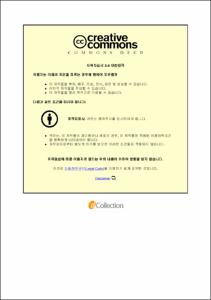시스틴이 글루타민 없는 조건에서 시스테인 산화를 통해 유발하는 세포사
- Abstract
- Cystine, the disulfide form of cysteine, is dominant form of cysteine equivalent in the extracellular milieu. Cystine is mainly transported into cells via Xc- exchanger. Intracellular cystine is rapidly converted to cysteine. Some of cysteine is exported out of the cells and oxidized to cystine. This series of reactions is called cystine/cysteine cycle. This cystine/cysteine cycle is attracting attention recently because it was reported this cycle itself can play an important role in antioxidant function and promote the progression of cancer by altering the extracellular environment. However, cysteine is known as highly reactive compound. Moreover, during the cysteine oxidation process, it is possible that reactive oxygen species (ROS) is generated. Therefore, we hypothesized that cystine uptake could cause cell death through cysteine oxidation.
We used H9c2 cell-line and cells were mainly cultured in modified Krebs-Henseleit buffer (MKH) containing cystine during experiment.
Cystine facilitated lactate dehydrogenase (LDH) release when cells were cultured in Krebs-Henseleit buffer. Cell death was prevented by bathocuproine sulfonate (BCS) treatment, which inhibits cysteine oxidation by copper chelation. On the other hand, deferoxamine, an iron chelator, didn’t prevent LDH release. However, the cystine-induced cell death didn’t occur when cells were cultured in Dulbecco’s Modified Eagle’s Medium (DMEM). Therefore, we speculated certain compounds protected cells from cystine-induced cell death. We found glutamine protected cells from cystine-induced cell death. To elucidate whether extracellular cysteine caused cell death, we measured the extracellular thiol concentration. Thiol release was steadily increased for 24 hours when BCS was added, which suggested that oxidation of extracellular thiol was almost completely inhibited. Glutamine explosively stimulated thiol release in 4 hours after glutamine treatment, but the concentration of extracellular thiol was decreased at 24 hours after it. To clarify whether extracellular cysteine triggered cell death, we treated MK-571 to inhibit thiol release completely. By l-buthionine sulfoximine (BSO) treatment, glutathione was depleted. However thiol release facilitated by glutamine didn’t decrease, which suggested the main released thiol was cysteine. Cysteine release facilitated by glutamine was completely inhibited by MK-571. MK-571 treatment reduced cystine-induced cell death.
In conclusion, cystine uptake would trigger cell death via cysteine release and its oxidation. Cystine-induced cell death has not occurred in normal cell culture buffer as glutamine protected cells from it. Glutamine facilitated thiol release. The mechanism of cell protection and thiol release by glutamine needs to be further studied.
- Issued Date
- 2018
- Awarded Date
- 2019-02
- Type
- Dissertation
- Alternative Author(s)
- Eun-Cheol Son
- Affiliation
- 울산대학교
- Department
- 일반대학원 의학과
- Advisor
- 김영훈
- Degree
- Master
- Publisher
- 울산대학교 일반대학원 의학과
- Language
- eng
- Rights
- 울산대학교 논문은 저작권에 의해 보호받습니다.
- Appears in Collections:
- Medicine > 1. Theses (Master)
- 파일 목록
-
-
Download
 200000178473.pdf
기타 데이터 / 956.2 kB / Adobe PDF
200000178473.pdf
기타 데이터 / 956.2 kB / Adobe PDF
-
Items in Repository are protected by copyright, with all rights reserved, unless otherwise indicated.